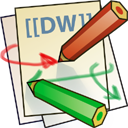| Starije izmjene na obje straneStarija izmjenaNovija izmjena | Starija izmjena |
| en:start [2016/02/19 19:33] – sbabic | en:start [2016/02/19 19:59] (trenutno) – sbabic |
|---|
| <font 10.0pt/inherit;;inherit;;inherit>Not far back in history only the privileged were taught to read and write, and it was generally acceptable ( if not desirable) for common people to be illiterate. Nowadays, thanks to the improved teaching methods, even people with serious mental impairment are not only literate, but are taught different subjects as to develop specific skills and acquire knowledge to exert their utmost capabilities. Therefore, there is no reason to make any exception for programming. The point is that it should be done in a way that children can accept programming. Unfortunately, none of programming languages are tailored to suit children at early stage, either being too difficult, or too lopped. Thus, most children learn to use computers without actually learning programming, or in most cases, they use some programs with limited or no explanation of how a particular program works. We believe it should be changed,because it is as possible to acquire programming in such a natural way as acquiring reading skills by using picture-books, acquiring foreign languages by listening and singing nursery-rhymes or acquiring counting by playing “Home You Go”. The author of these lines developed a method of teaching children the use and behaviour of variables in RAM, and the basis of coding in 1980. Everything was done by using a toy called Mema made by children themselves.</font> | <font 10.0pt/inherit;;inherit;;inherit>Not far back in history only the privileged were taught to read and write, and it was generally acceptable ( if not desirable) for common people to be illiterate. Nowadays, thanks to the improved teaching methods, even people with serious mental impairment are not only literate, but are taught different subjects as to develop specific skills and acquire knowledge to exert their utmost capabilities. Therefore, there is no reason to make any exception for programming. The point is that it should be done in a way that children can accept programming. Unfortunately, none of programming languages are tailored to suit children at early stage, either being too difficult, or too lopped. Thus, most children learn to use computers without actually learning programming, or in most cases, they use some programs with limited or no explanation of how a particular program works. We believe it should be changed,because it is as possible to acquire programming in such a natural way as acquiring reading skills by using picture-books, acquiring foreign languages by listening and singing nursery-rhymes or acquiring counting by playing “Home You Go”. The author of these lines developed a method of teaching children the use and behaviour of variables in RAM, and the basis of coding in 1980. Everything was done by using a toy called Mema made by children themselves.</font> |
| |
| \\ | |
| {{:wiki:marko_1.png?333x220 }}{{ :wiki:lukamema.jpg?nolink&333x220 }} | |
| \\ | \\ |
| {{:wiki:marko_1.png?333x220 }}{{ :wiki:lukamema.jpg?nolink&333x220 }} | {{:wiki:marko_1.png?333x220 }}{{ :wiki:lukamema.jpg?nolink&333x220 }} |
| //<font 10.0pt/inherit;;inherit;;inherit>The teacher</font> // //<font 10.0pt/inherit;;inherit;;inherit>herself did not have any specific knowledge of programming, and the method did not require any additional costs. Children learned a lot about programming,simply by discovering that in a computer there is something that is called a program being built by instructions. By playing Mema, they easily understood how important the sequence of instructions is for building a program. They quickly spotted that some instructions read numbers in RAM, others calculated results and stored them again in RAM, and while numbers were stored in variables, calculations were done by using variables or constants. Furthermore, they learned that new contents of RAM replaced the old ones, and that sometimes the result might be too big to fit into RAM (Overflow), that new contents of a variable replace the old one…</font> // | //<font 10.0pt/inherit;;inherit;;inherit>The teacher</font> // //<font 10.0pt/inherit;;inherit;;inherit>herself did not have any specific knowledge of programming, and the method did not require any additional costs. Children learned a lot about programming,simply by discovering that in a computer there is something that is called a program being built by instructions. By playing Mema, they easily understood how important the sequence of instructions is for building a program. They quickly spotted that some instructions read numbers in RAM, others calculated results and stored them again in RAM, and while numbers were stored in variables, calculations were done by using variables or constants. Furthermore, they learned that new contents of RAM replaced the old ones, and that sometimes the result might be too big to fit into RAM (Overflow), that new contents of a variable replace the old one…</font> // |
| |
| {{:wiki:marko_2.png?nolink&250x293}} | {{ :wiki:marko_2.png?256x300 }} |
| |
| <font 10.0pt/inherit;;inherit;;inherit>Picture 2. The children using Mema learn how to program without a computer.</font> | <font 10.0pt/inherit;;inherit;;inherit>Picture 2. The children using Mema learn how to program without a computer.</font> |
| <font 10.0pt/inherit;;inherit;;inherit>Should you get intrigued by Mema so far, it may start removing dust from my old papers and toys and eventually bring to life a story that years ago fascinated me. The method I am dealng with was implemented in a primary school in Rijeka (Croatia) in 1980.</font> | <font 10.0pt/inherit;;inherit;;inherit>Should you get intrigued by Mema so far, it may start removing dust from my old papers and toys and eventually bring to life a story that years ago fascinated me. The method I am dealng with was implemented in a primary school in Rijeka (Croatia) in 1980.</font> |
| |
| {{:wiki:razred.png?nolink&400x278}} | {{ :wiki:razred.png?350x209 }} |
| |
| <font 10.0pt/inherit;;inherit;;inherit>Picture 3. The children with their teacher Maja Mulac (in year 1980.)</font> | <font 10.0pt/inherit;;inherit;;inherit>Picture 3. The children with their teacher Maja Mulac (in year 1980.)</font> |

